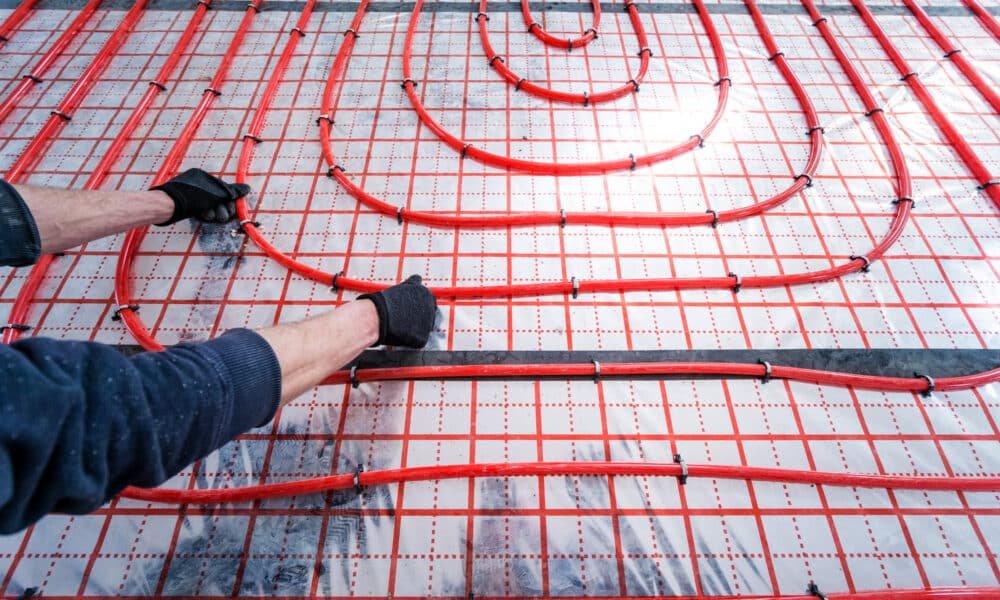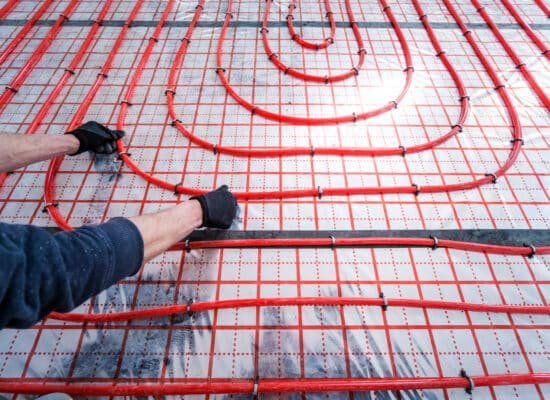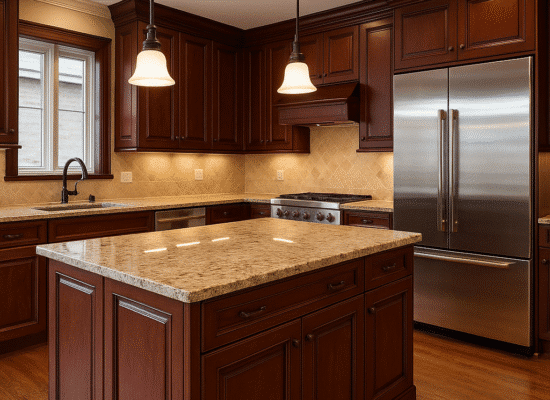Thinking about upgrading your driveway with radiant heating? You’re not alone. With winter weather and icing risks, many homeowners are curious about the best rental vacation of sorts for their home: a driveway that melts its own snow. Okay — maybe “rental vacation” isn’t quite right here — but bear with me. Installing a radiant driveway system (aka snow-melt or heated driveway) is one of those high-impact upgrades that combine luxury, convenience, and safety. But with that, there’s a price tag. Let’s dive into the nitty-gritty of the cost to install a radiant driveway in 2025 — covering the cost to install radiant driveway 2025, materials, labor, types of systems, variables that drive cost, and whether you’ll get your money’s worth.
Table Of Content
- What is a Radiant Driveway?
- Cost Overview in 2025
- HTable – Cost Breakdown (Materials + Labor)
- What Drives the Cost ↑ (and ↓)
- System Type – Electric vs Hydronic
- Driveway Size, Shape & Layout
- Existing Driveway Removal or Retrofit
- Driveway Material & Surface Finish
- Insulation & Control Systems
- Local Labor Rates & Regional Factors
- Operating & Maintenance Costs
- Is It Worth It? Pros and Cons
- Pros
- Cons
- Tips to Manage & Optimize Your Cost
- Regional Cost Breakdown for Radiant Driveway Installation (2025)
- Custom Estimate Worksheet (Editable Template)
- Example Scenario – Denver, CO (Hydronic System)
- Add-On Features That Affect Final Cost
- ROI Snapshot (2025 Estimates)
- Quick Cost Optimization Tips
- FAQs
The cost to install radiant driveway systems can vary significantly based on several factors. Understanding these factors can help you plan your budget accordingly.
What is a Radiant Driveway?
A radiant driveway heating system (also called a “heated driveway” or snow-melt driveway) uses either electric cables/mats or hydronic (water/antifreeze) tubing embedded beneath the driveway surface to generate heat and melt snow and ice.
In simpler terms, instead of shoveling or plowing, your driveway warms itself (or the part of it) so winter mornings become far more manageable.
When considering the cost to install radiant driveway, it’s important to evaluate both the initial investment and the long-term savings on snow removal and maintenance.
Cost Overview in 2025
Overall, the cost to install radiant driveway systems can be justified with the convenience they provide, especially in regions with heavy snowfall.
Here are the broad cost expectations for 2025:
-
Typical cost per square foot: $12 to $28 for full coverage systems (concrete/asphalt)
-
Average total cost for a 2-car driveway: ~$6,900 to $16,000 (depending on size, materials, etc.)
-
For upscale installations or larger driveways, it can climb much higher (even $20,000+).
-
Some tools list “basic cost to install radiant driveway” around $11.53 to $17.84 per sq ft (April 2025 data) for simpler situations.
For homeowners considering this investment, the cost to install radiant driveway systems is a critical aspect to weigh against the benefits.
HTable – Cost Breakdown (Materials + Labor)
A radiant driveway is a significant investment, and understanding the cost to install radiant driveway is crucial before proceeding.
Here’s a sample cost table to visualize approximate cost ranges. Of course, your region, driveway size, slope, removal needs, system type will all impact the real number.
| Driveway Size & Type | Material + System Cost* | Labor Cost Estimate* | Comments |
|---|---|---|---|
| Small single-car (~300 sq ft) electric system | ~$3,600–$9,000 | ~$1,500–$4,000 | Minimal removal, flat grade |
| Standard two-car (~576 sq ft) full-coverage | ~$6,900–$16,000 | ~$3,000–$7,000 | Typical house setup |
| Large or premium driveway (>800 sq ft, pavers, hydronic) | ~$16,000–$30,000+ | ~$5,000–$12,000+ | High-end materials, full re-pave, hydronic tubing |
*Estimates based on national averages; local costs may vary significantly.
What Drives the Cost ↑ (and ↓)
The decision to invest in a radiant driveway should factor in the cost to install radiant driveway, including any potential savings on snow removal.
System Type – Electric vs Hydronic
-
Electric systems: Heating cables or mats beneath the surface. Lower upfront cost, simpler installation, but higher operating cost in many cases.
-
Hydronic systems: Tubing through which hot water/antifreeze circulates, powered by a boiler. Higher upfront cost, but potentially lower long-term operating cost especially in snow-heavy climates.
Driveway Size, Shape & Layout
Larger square footage obviously costs more. Also curves, gradients, multiple slopes or multiple driveways add complexity and cost.
Existing Driveway Removal or Retrofit
If you are tearing out an old driveway or retrofitting a system under an existing surface, expect extra expense. For retrofit, cost might run $7–$17 per sq ft.
Driveway Material & Surface Finish
Material matters. Heated driveway on concrete or asphalt is one cost range; using pavers or premium finish will bump it higher.
Insulation & Control Systems
Adding insulation beneath the slab helps efficiency (and may reduce running cost) but adds upfront cost. Automated sensors, controls, zone systems also raise cost.
Local Labor Rates & Regional Factors
Labor cost varies by region (urban vs rural), accessibility of site, weather conditions, permit or electrical upgrade needs — all influence final cost.
Operating & Maintenance Costs
It’s advisable to assess the cost to install radiant driveway in relation to the expected maintenance and operating costs over time.
You’ll also want to budget for ongoing costs:
-
Electric system heating cost (for 1,000 sq ft) typically $120 to $600 per winter season, depending on electricity rates and weather intensiveness.
-
Hydronic system may have lower seasonal cost but may incur boiler and maintenance costs.
-
System lifespan: Many systems last 15-20 years (some up to 30) if well maintained.
Is It Worth It? Pros and Cons
Ultimately, the cost to install radiant driveway can vary based on your preferences and local market conditions.
Pros
-
Snow and ice removal becomes virtually effortless — improved safety for you, guests, and pets (hello Duke!).
-
Reduced use of salt/de‐icer chemicals, which can damage the driveway surface and landscaping.
-
Potentially higher home value, especially in snow-heavy areas.
-
Keeps driveway surface healthier (less freeze-thaw damage).
Cons
-
High upfront cost – not a small investment.
-
If you live in a mild climate with little snow, you may not recoup the expense.
-
Operating cost still exists; utility bills will reflect it.
-
If retrofitting without removing old driveway, may run into warranty issues and lower efficiency.
Tips to Manage & Optimize Your Cost
Another important aspect to consider is the overall cost to install radiant driveway when planning your renovation budget.
-
Opt for tire-track heating (just the vehicle lanes) instead of full coverage if the budget is tight and the snow load is moderate.
-
Get multiple bids from contractors, ask specifically for breakdown of system, insulation, control panel cost.
-
Ensure your electrical panel/boiler capacity is sufficient — upgrades can surprise you.
-
Consider your climate: if you have only occasional snow, portable heated mats or enhanced snow removal may be more cost-effective.
-
Insist on proper insulation beneath the heating system to prevent heat loss into the substrate — improves efficiency and reduces annual running cost.
-
Ask about warranties: for heating elements, controls, and the driveway surface itself.
FAQs
Additionally, understanding the average cost to install radiant driveway will help you gauge whether it fits your budget.
1. What is the average cost per square foot to install a radiant driveway in 2025?
Typically around $12 to $28 per square foot for a full coverage system under concrete or asphalt.
2. What’s the difference between electric and hydronic radiant driveway systems?
Electric systems use cables or mats beneath the surface and are cheaper to install, but may cost more to operate. Hydronic systems use heated water/antifreeze through tubing, cost more upfront but can be more efficient long-term.
3. Can I install a radiant driveway over an existing driveway?
Yes, but with caveats. Retrofits can cost from ~$7 to $17 per square foot and may involve cutting grooves, resurfacing, and could void warranties.
4. What are typical annual operating costs?
For a 1,000 sq ft driveway, expect roughly $120 to $600 per winter for an electric system. Hydronic might vary based on fuel source and usage.
5. How long will the system last?
Many systems last 15-20 years or more, assuming proper installation and maintenance. Some warranty periods may claim up to 30 years.
6. Is a radiant driveway worth the cost?
If you live in a snowy climate, value convenience and safety, and plan to stay in your home long-term, yes — it can be worth it. If you have mild winters or will move soon, it may be harder to justify. Evaluate your usage, budget, and priorities before committing.













